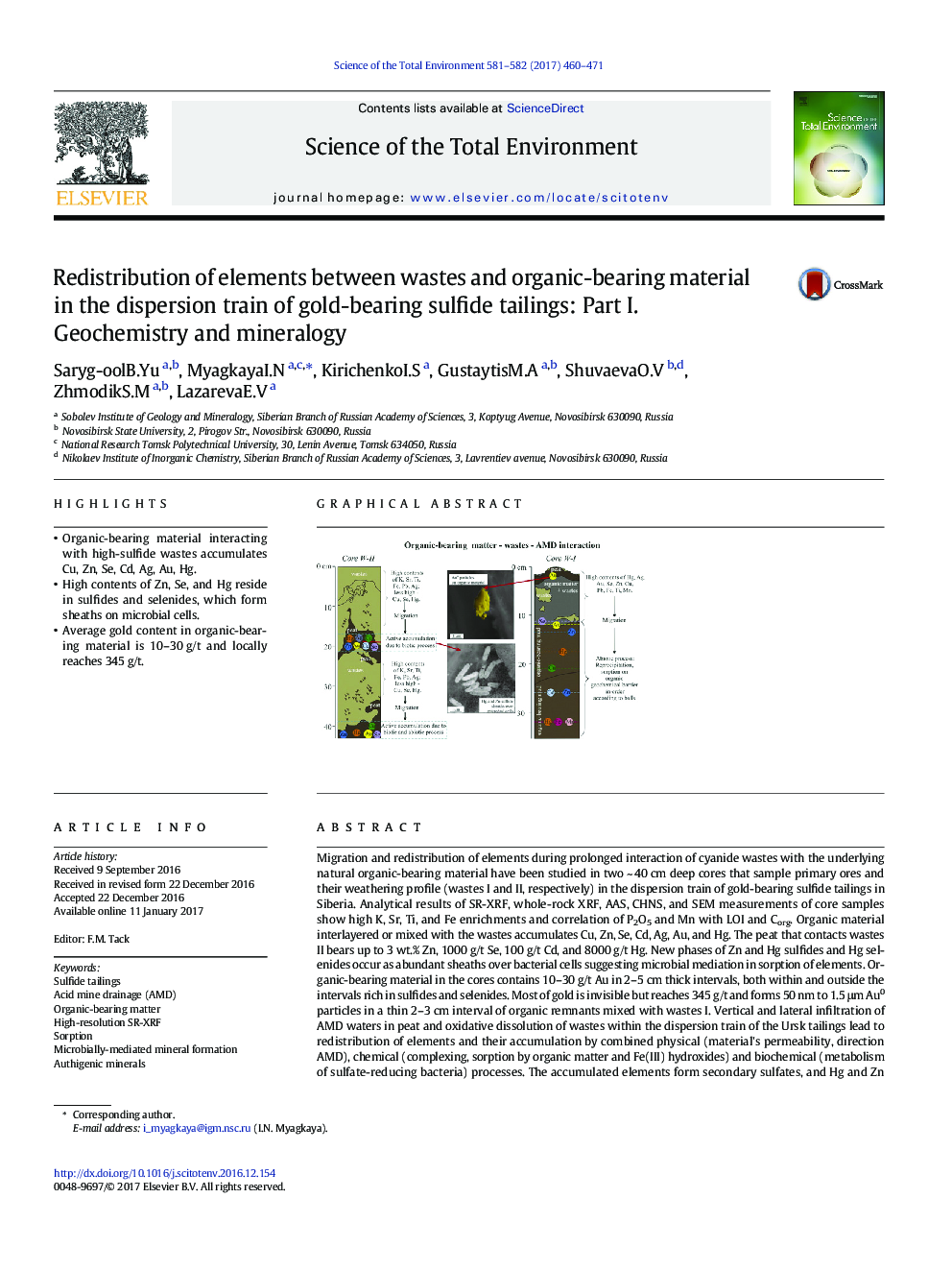| کد مقاله | کد نشریه | سال انتشار | مقاله انگلیسی | نسخه تمام متن |
|---|---|---|---|---|
| 5751791 | 1619710 | 2017 | 12 صفحه PDF | دانلود رایگان |
- Organic-bearing material interacting with high-sulfide wastes accumulates Cu, Zn, Se, Cd, Ag, Au, Hg.
- High contents of Zn, Se, and Hg reside in sulfides and selenides, which form sheaths on microbial cells.
- Average gold content in organic-bearing material is 10-30Â g/t and locally reaches 345Â g/t.
Migration and redistribution of elements during prolonged interaction of cyanide wastes with the underlying natural organic-bearing material have been studied in two ~ 40 cm deep cores that sample primary ores and their weathering profile (wastes I and II, respectively) in the dispersion train of gold-bearing sulfide tailings in Siberia. Analytical results of SR-XRF, whole-rock XRF, AAS, CHNS, and SEM measurements of core samples show high K, Sr, Ti, and Fe enrichments and correlation of P2O5 and Mn with LOI and Corg. Organic material interlayered or mixed with the wastes accumulates Cu, Zn, Se, Cd, Ag, Au, and Hg. The peat that contacts wastes II bears up to 3 wt.% Zn, 1000 g/t Se, 100 g/t Cd, and 8000 g/t Hg. New phases of Zn and Hg sulfides and Hg selenides occur as abundant sheaths over bacterial cells suggesting microbial mediation in sorption of elements. Organic-bearing material in the cores contains 10-30 g/t Au in 2-5 cm thick intervals, both within and outside the intervals rich in sulfides and selenides. Most of gold is invisible but reaches 345 g/t and forms 50 nm to 1.5 μm Au0 particles in a thin 2-3 cm interval of organic remnants mixed with wastes I. Vertical and lateral infiltration of AMD waters in peat and oxidative dissolution of wastes within the dispersion train of the Ursk tailings lead to redistribution of elements and their accumulation by combined physical (material's permeability, direction AMD), chemical (complexing, sorption by organic matter and Fe(III) hydroxides) and biochemical (metabolism of sulfate-reducing bacteria) processes. The accumulated elements form secondary sulfates, and Hg and Zn selenides. The results provide insights into accumulation of elements in the early history of coal and black shale deposits and have implications for remediation of polluted areas and for secondary enrichment technologies.
239
Journal: Science of The Total Environment - Volumes 581â582, 1 March 2017, Pages 460-471
